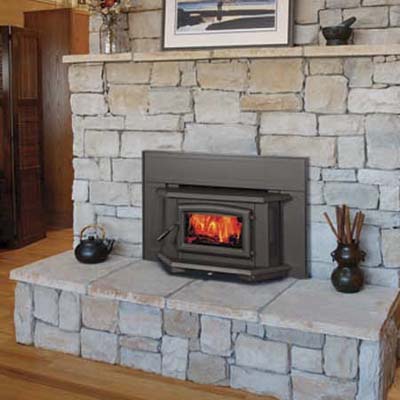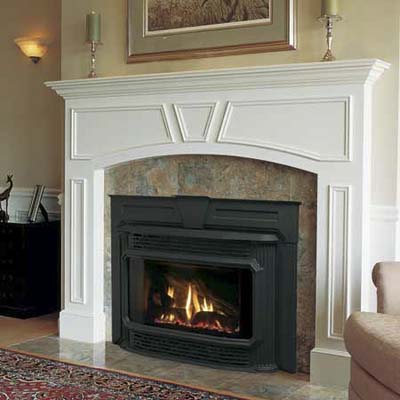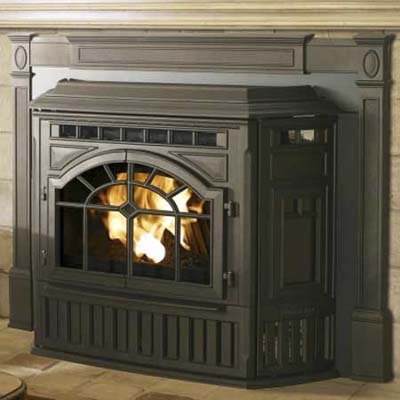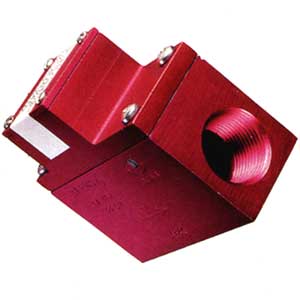Your steaks won't be sizzling this summer if your gas
grill's on the fritz. Use this guide to identify parts and problems and keep it
firing up just like new.

illustration: Harry Campbell
Burner Tubes
If flames burn unevenly or burner doesn't light, clean
portholes with wire brush.
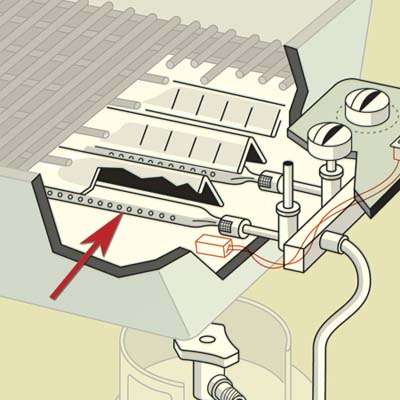
illustration: Harry Campbell
Flame
Look for dark blue center that transitions to light blue
with occasional yellow tip. If pattern is off or flames are all yellow, turn
off burners and clean portholes with wire brush. If abnormal color persists,
remove tubes and ream out with stiff wire.

illustration: Harry Campbell
Burner Control Knob
Always wait until tank valve is open before turning on, or
regulator may go into mode that restricts gas flow for safety.

illustration: Harry Campbell
Grill Hose
If burner doesn't light or flame is low, look for kink or
check for leak at connection points. If leak is in hose, replace it.
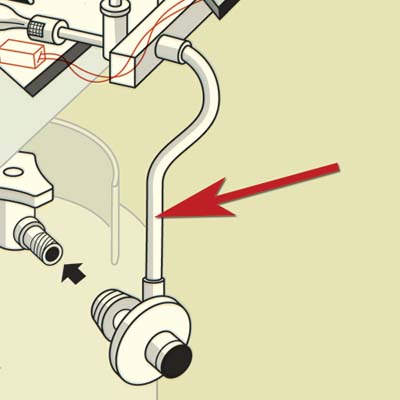
illustration: Harry Campbell
Propane Tank
If you smell gas or tank runs out after only a few uses,
apply soapy water to valve base and tank seams. If solution bubbles, there's a
leak; stand back and call fire department. Check for leaks every time you
change tank
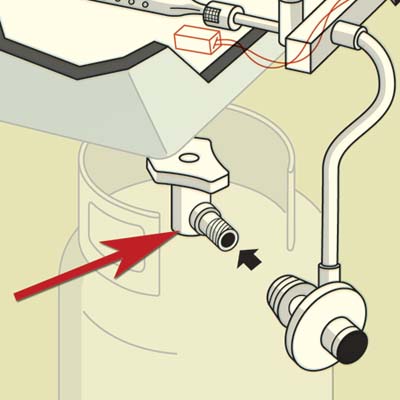
illustration: Harry Campbell
Regulator
Controls gas flow from tank. If flames flicker and grill
doesn't get hot, regulator may be in low-flow safety mode. Close tank valve,
turn off knobs, detach regulator, and turn knobs to high. Wait 1 minute, shut
off knobs, and reconnect regulator. Slowly open valve.

illustration: Harry Campbell
by ALEX QUEVEDOTHIS OLD HOUSE MAGAZINE
http://www.thisoldhouse.com/toh/photos/0,,20292393,00.html

